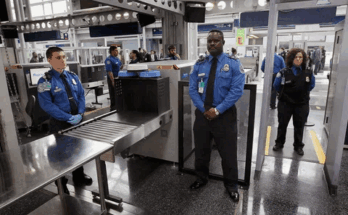Canada Delivery Jobs
In Canada’s fast-paced, digitally driven economy, delivery jobs have surged from a convenience to a cornerstone of daily life. The rise of e-commerce, food delivery apps, and instant gratification culture has turned “delivery driver” into one of the country’s most in-demand roles. From students earning extra cash to newcomers launching careers, delivery jobs offer flexibility, accessibility, and a foothold in Canada’s gig economy. This article explores the landscape of delivery jobs in Canada, covering types of roles, earning potential, challenges, and how technology is reshaping this dynamic sector.
The Delivery Boom: Canada’s Reliance on Quick Commerce
Canada’s delivery sector has exploded in recent years, fueled by:
- E-commerce Growth: Online retail sales hit $109 billion in 2022, doubling since 2019 (Statistics Canada).
- Food Delivery Apps: Platforms like Uber Eats, DoorDash, and SkipTheDishes now serve 48% of Canadians monthly.
- Aging Population: Demand for prescription and grocery deliveries in provinces like Nova Scotia and New Brunswick.
- Urbanization: Dense cities like Toronto, Vancouver, and Montréal rely on bikes, cars, and scooters for last-mile logistics.
The industry employs over 500,000 gig and full-time workers, with projections of 15% growth by 2025. While often labeled as “delivery boys” colloquially, roles range from part-time couriers to logistics managers, reflecting the sector’s diversity.
Types of Delivery Jobs in Canada
1. Food Delivery Drivers
- Platforms: Uber Eats, DoorDash, SkipTheDishes, Instacart.
- Requirements: Bike, car, or scooter; smartphone; food safety certification (optional).
- Pay: 15–25/hour + tips. Peak earnings during weekends and holidays.
2. Parcel and Courier Services
- Employers: Amazon Flex, Purolator, FedEx, Canada Post.
- Roles: Package delivery drivers, warehouse sorters, logistics coordinators.
- Pay: 17–30/hour (full-time roles often include benefits).
3. Medical and Pharmacy Deliveries
- Demand Drivers: Aging population and telehealth expansion.
- Employers: Shoppers Drug Mart, local pharmacies, MediSystem.
- Pay: 18–22/hour + mileage reimbursement.
4. Grocery and Retail Delivery
- Companies: Walmart, Loblaws (PC Express), Uber Grocery.
- Tasks: Shopping for orders, delivering perishables.
- Pay: 16–20/hour + tips.
5. Independent Couriers
- Self-Employed: Contract with small businesses for local deliveries.
- Tools: Apps like Roadie or CitizenShipper for gig matching.
- Earnings: 20–35/hour (varies by contract).
Requirements for Delivery Jobs
- Legal and Safety Credentials
- Driver’s License: Class 5 (personal vehicle) or Class 4 for commercial transport.
- Vehicle Insurance: Ride-sharing endorsement required for gig apps.
- Background Check: Criminal record checks for roles handling sensitive items (e.g., pharmaceuticals).
- Equipment
- Vehicle: Car, bike, e-scooter, or e-bike (urban areas).
- Tech: Smartphone with GPS, thermal bags (food), or cargo trailers.
- Skills
- Navigation: Familiarity with local streets and apps like Google Maps.
- Customer Service: Friendly communication for ratings and tips.
- Time Management: Balancing multiple orders efficiently.
- Work Authorization
- Citizens/PRs: No restrictions.
- International Students: Can work up to 20 hours/week off-campus.
- Temporary Workers: Open work permits or gig economy eligibility.
How to Find Delivery Jobs in Canada
- Gig Apps
- Sign up directly with Uber, DoorDash, or Instacart. Approval takes 1–7 days.
- Job Boards
- Search “delivery driver” on Indeed, LinkedIn, or Glassdoor.
- Company Websites
- Apply to Canada Post, Amazon Flex, or regional couriers like Dynamex.
- Networking
- Join Facebook groups (e.g., “Toronto Delivery Drivers”) for insider tips.
- Government Resources
- Use Job Bank or provincial sites like WorkBC for verified listings.
Challenges in the Delivery Industry
- Weather Extremes: Winter storms in Alberta or Quebec can delay deliveries and increase accident risks.
- Vehicle Costs: Fuel, maintenance, and insurance eat into earnings—gig workers spend 20–30% of income on expenses.
- Inconsistent Income: No guaranteed wages; earnings fluctuate with demand and competition.
- Safety Risks: Theft, aggressive dogs, or traffic accidents—BC reports 12% of courier injuries annually.
- Algorithm Pressures: Apps penalize late deliveries or low ratings, stressing workers.
Opportunities and Innovations
- Financial Incentives
- Tips: Average 3–7 per food order in urban areas.
- Bonuses: Surge pricing during snowstorms or holidays (up to $50/hour).
- Benefits: Some companies (e.g., FedEx) offer health insurance and RRSP matching.
- Career Growth
- Transition to supervisory roles, logistics management, or start a delivery franchise.
- Tech Advancements
- E-Bikes and EVs: Toronto and Vancouver subsidies for eco-friendly vehicles.
- Delivery Robots: Testing in Ottawa and Calgary for contactless service.
- Immigration Pathways
- Federal Skilled Trades Program: Recognizes experienced drivers for PR.
- Provincial Nominee Programs (PNPs): Alberta’s AINP includes transport roles.
- Unions and Advocacy
- United Food and Commercial Workers (UFCW): Campaigning for gig worker rights in Ontario.
Voices from the Frontlines: Worker Stories
Liam, Uber Eats Driver in Vancouver: “I work 25 hours/week between classes. Tips from luxury condo orders double my earnings—it’s how I pay rent!”
Aisha, Amazon Flex Driver in Toronto: “The 4 AM shifts are tough, but I clear $1,200/week. Saving to open my own courier service.”
Jean, Pharmacy Courier in Montréal: “Delivering meds to seniors is rewarding. My French fluency helps build trust in the community.”
The Future of Delivery Jobs in Canada
- Automation: Drones and self-driving trucks may handle rural routes, but urban last-mile jobs will stay human-centric.
- Regulations: Ontario’s Digital Platform Workers’ Rights Act (2024) mandates minimum wage and safety standards for gig workers.
- Sustainability: Cities like Halifax are creating “delivery hubs” to reduce congestion and emissions.
Canada Delivery Jobs
Delivery jobs in Canada are more than a side hustle—they’re a flexible, scalable career path in a digital-first world. While challenges like unpredictable income and harsh winters persist, the sector’s growth and innovation offer routes to financial stability and entrepreneurship. For newcomers, it’s a bridge to Canadian experience; for all, it’s a testament to the evolving nature of work.
As the industry shifts, one thing remains constant: Canada’s need for speed, reliability, and the human touch.
FAQs
- Q: Do I need a car for delivery jobs?
A: No! Bikes and e-scooters work in cities. Some apps even offer rentals. - Q: Can I immigrate to Canada as a delivery driver?
A: Yes, through PNPs or the Federal Skilled Trades Program with experience. - Q: What’s the best app for beginners?
A: DoorDash offers flexible scheduling and upfront tip visibility.



